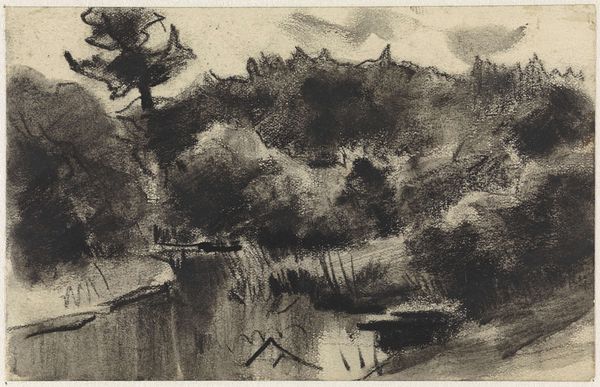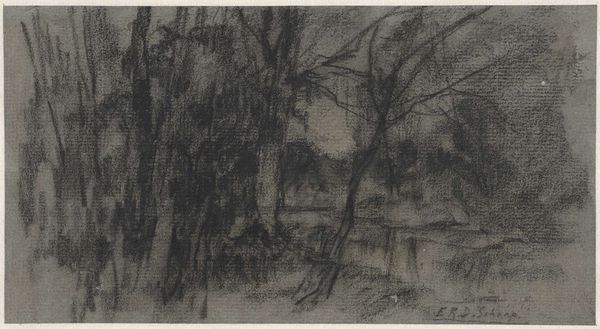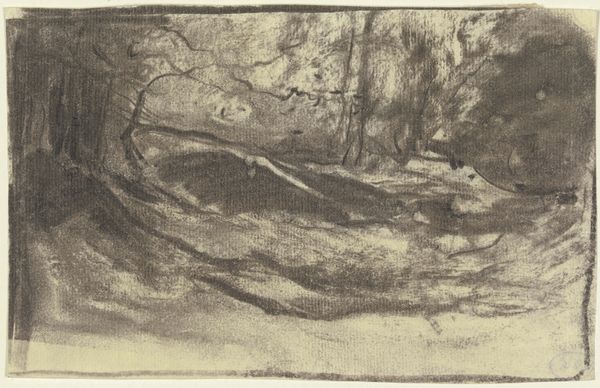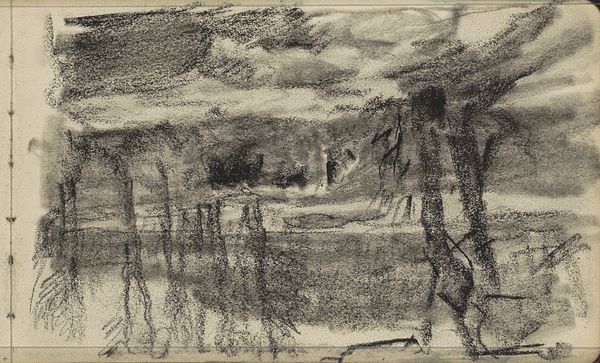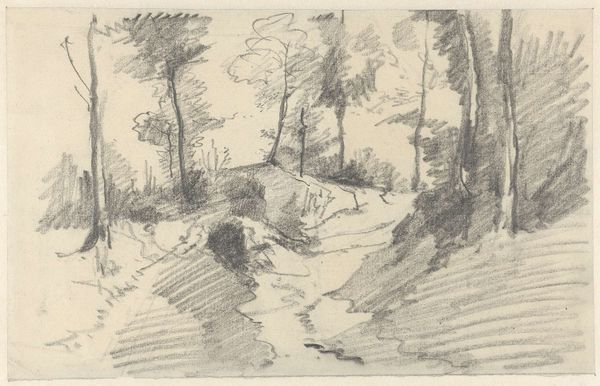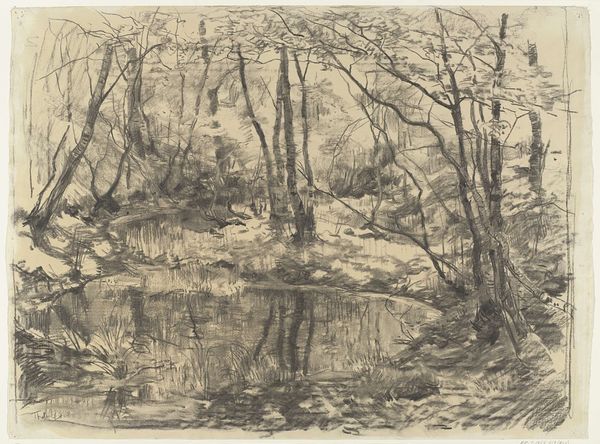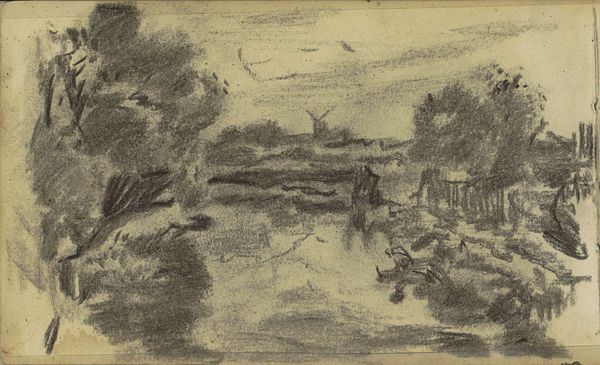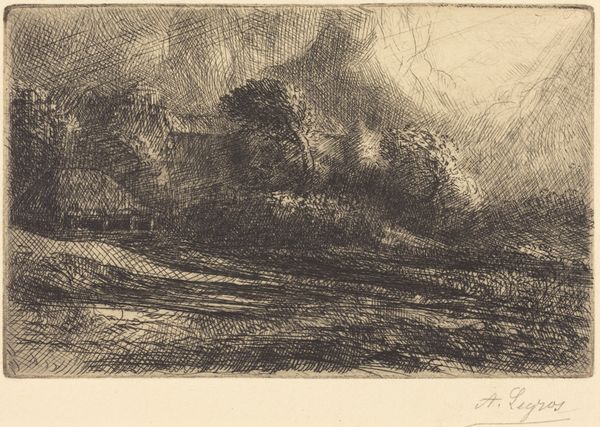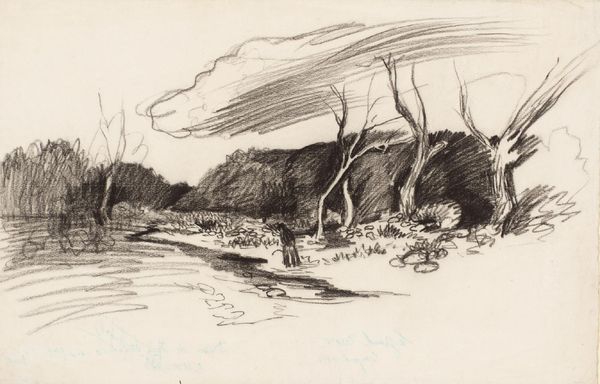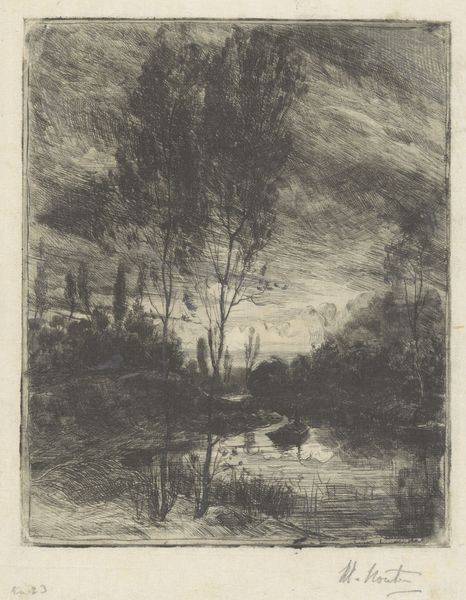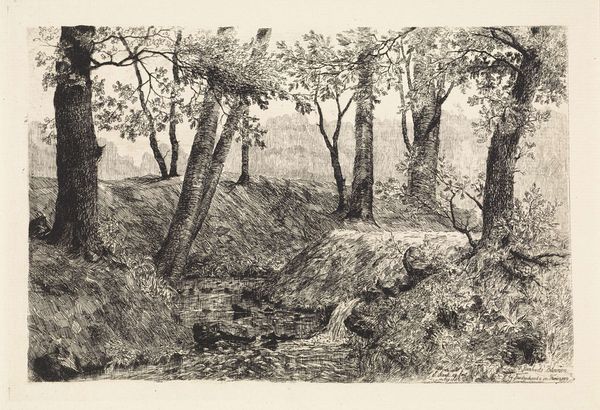
drawing, charcoal
#
pencil drawn
#
drawing
#
pencil sketch
#
landscape
#
pencil drawing
#
charcoal
#
realism
Dimensions: height 94 mm, width 148 mm
Copyright: Rijks Museum: Open Domain
Curator: A brooding piece, wouldn't you say? It immediately evokes a certain melancholy. Editor: Well, let’s explore the source of that feeling. What we’re looking at is "Landschap met bosrand en water"—Landscape with Woods and Water—a charcoal and pencil drawing by Jan van Essen. It's held here at the Rijksmuseum and was created sometime between 1864 and 1936. Curator: Yes, and look at the dominance of dark shades, the tree in the background looming almost as a threat. What meaning is inherent in this vision? Is it a comment on the imposing dominance of nature over human endeavours? Editor: Perhaps, but I read it through the lens of industrialization. That dense treeline, almost like a dark cloud, could symbolize the encroaching urban landscape threatening the serenity of the natural world. The fence, the sign of civilization creeping in. Curator: I do like your reading of the symbol. It is interesting that it's made from charcoal, isn't it? Charcoal as a burned material is symbolic in and of itself—the cycle of destruction and rebirth—maybe that’s not meant to be so threatening but the start of something. The drawing suggests that we are returning to the basics of the earth and a new relationship with the landscape. Editor: The materials certainly add another layer to the piece. Van Essen seems to want to invite us to reflect on our footprint, on the historical impacts of progress, on the need to conserve landscapes. Curator: It’s more like, he offers the chance of renewal; an invitation to delve into an archetypal past. And, from there, begin again. Editor: True. But can this act of "renewal" truly occur when embedded into structures of class and unequal distribution of resource? A question, certainly. Curator: All visual traditions leave unanswered questions. We see this reflected here and across centuries of drawing. Editor: Indeed, food for thought, both from a social and iconographical viewpoint. Thank you.
Comments
No comments
Be the first to comment and join the conversation on the ultimate creative platform.
